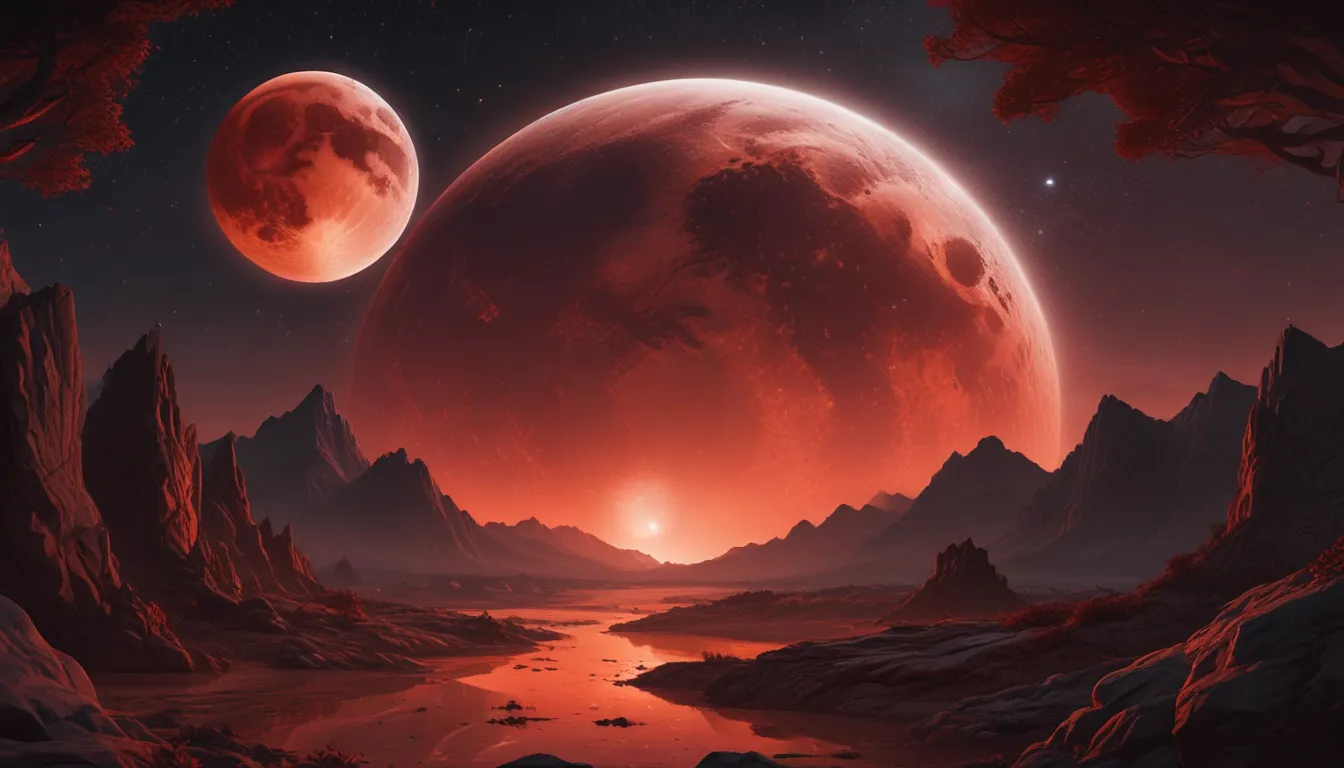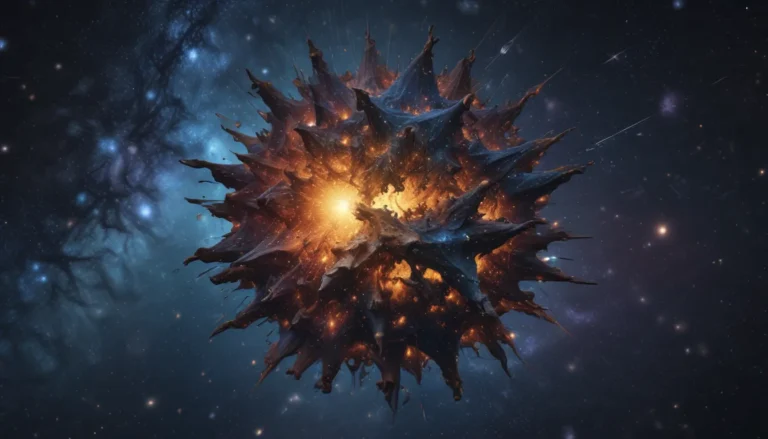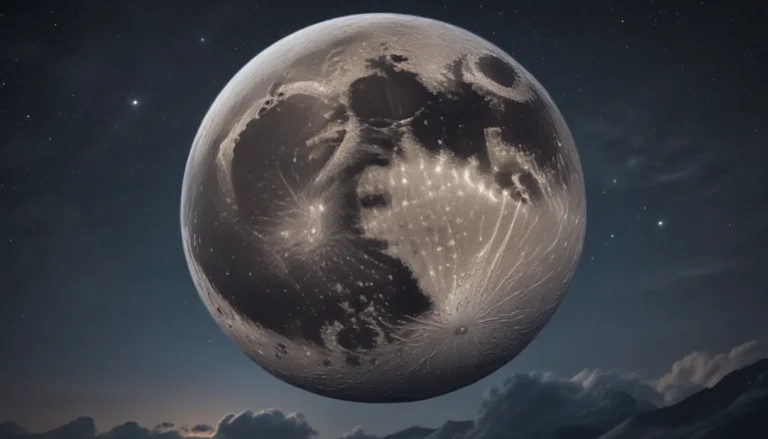The pictures we use in our articles might not show exactly what the words say. We choose these pictures to make you interested in reading more. The pictures work together with the words but don’t take their place. The words still tell you the important facts.
Are you fascinated by the eerie yet mesmerizing sight of a blood moon? The celestial event that turns the moon a captivating shade of crimson has captured the imagination of humans for centuries. From ancient lore to modern-day science, blood moons have inspired myths, superstitions, and celebrations across cultures. Let's delve into the captivating world of blood moons and unravel the mysteries behind their chilling glow and enchanting nickname.
Understanding the Phenomenon of Blood Moons
A blood moon occurs during a total lunar eclipse when Earth positions itself between the sun and the moon, casting a shadow over the lunar surface. The reddish hue of the moon during this event is a result of sunlight passing through Earth's atmosphere, scattering shorter blue light wavelengths and allowing longer red wavelengths to reach the moon. This unique phenomenon has sparked various interpretations and captivated the minds of people throughout history.
The Intriguing Fear Surrounding Blood Moons
- Historical Significance: Blood moons have long been associated with ominous events, prophecies, and folklore, leading many cultures to view them as harbingers of disaster or divine displeasure.
- Apocalyptic Associations: In some religious texts, blood moons are interpreted as precursors to significant apocalyptic events, adding a supernatural fear to their occurrence.
- Unpredictable Occurrences: In ancient times, the sudden appearance of a blood moon without a scientific understanding caused fear and speculation among people.
Exploring the Myths and Legends of Blood Moons
- Native American Lore: Various Native American tribes saw blood moons as signs of health, prosperity, or impending change and calamity.
- Biblical References: References to blood moons in Christian scriptures, such as the Book of Joel, Acts, and Revelation, have often been interpreted as signs of significant biblical events.
- Mesopotamian Interpretations: Ancient Mesopotamians viewed lunar eclipses as assaults on the moon, leading them to perform rituals to protect against perceived threats.
Unveiling the Science Behind Blood Moons
- Frequency of Occurrence: Contrary to their dramatic appearance, blood moons are relatively frequent events, happening approximately once every 1.5 years.
- Color Variations: The exact shade of red during a blood moon can vary depending on atmospheric conditions like volcanic ash or pollution levels.
- Global Visibility: Blood moons can be observed from any location on Earth's night side, making them a globally observed phenomenon, weather permitting.
Impact of Blood Moons on Culture and Art
- Inspiration for Creativity: Blood moons have inspired countless works of art, literature, and music, reflecting humanity's fascination and fear of these celestial events.
- Modern Superstitions: Some individuals still believe in the influence of blood moons on human behavior, akin to the way a full moon is said to affect actions and emotions.
- Cultural Celebrations: Various cultures host festivals and ceremonies to honor the occurrence of a blood moon, recognizing its significance in their cultural or religious calendars.
Engaging with Blood Moons: Viewing and Safety Tips
- Planning Ahead: Check lunar eclipse schedules to anticipate the next blood moon and prepare for optimal viewing.
- Proper Equipment: While blood moons are visible to the naked eye, using binoculars or a telescope can enhance the viewing experience.
- Photography Guidance: Capture stunning photographs of a blood moon by adjusting camera settings, using a tripod, and finding a suitable location away from light pollution.
Embracing the Future of Blood Moons
- Predictable Events: Scientists can forecast blood moons well in advance, providing ample opportunities for enthusiasts to witness these natural spectacles.
- Continued Fascination: As long as humans gaze at the night sky, blood moons will continue to captivate and mystify, blending science, mythology, and art.
- Educational Value: Each blood moon offers a chance to deepen our understanding of celestial events, providing valuable educational moments.
- Potential Discoveries: Advancements in technology may reveal more about Earth's atmosphere and space weather during future blood moons, contributing to our knowledge of the universe.
Unveiling Unusual Blood Moon Phenomena
- Selenelion: A rare occurrence where both the sun and the eclipsed moon are visible simultaneously in the sky due to atmospheric refraction.
- Blue Blood Moon: An even rarer event combining a blood moon with a second full moon in a single calendar month, known as a blue moon.
- Super Blood Moon: Occurs when a blood moon coincides with the moon's closest approach to Earth, making it appear larger and brighter.
- Blood Moon Tetrad: A series of four consecutive total lunar eclipses with no partial eclipses in between, spaced six lunar months apart.
Blood Moons in Popular Culture
- Symbolism in Media: Blood moons are often used symbolically in movies, books, and television to represent change, mystery, or foreboding.
- Influence in Video Games: Many games incorporate blood moons as a mechanic to introduce night-time events or changes in the game world.
- Artistic References: Artists and poets frequently reference blood moons in their work, using imagery to evoke emotion and convey deep themes.
- Social Media Engagement: Blood moon events spark discussions and sharing on social platforms, bringing together individuals from around the world.
- Conspiracy Theories: Each blood moon event generates various conspiracy theories, adding to humanity's enduring fascination with these celestial phenomena.
Embracing the Mysteries of Blood Moons
As we journeyed through the captivating world of blood moons, we uncovered a blend of science and mythology that continues to intrigue and captivate us. These celestial events serve as a bridge between the past and present, merging the realms of astronomy and folklore. So, the next time a blood moon graces the night sky, take a moment to marvel at its beauty and reflect on the stories it tells. The mysteries of blood moons remind us of the vastness of the universe and the endless wonders waiting to be explored.
We hope this exploration of blood moons has enriched your understanding of these fascinating celestial events. Remember, each blood moon offers a unique opportunity to witness the beauty and complexity of our solar system. Happy stargazing!






